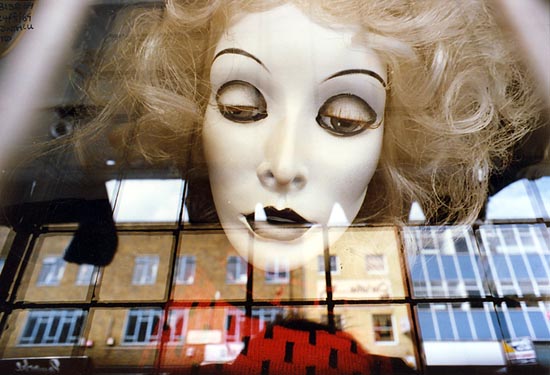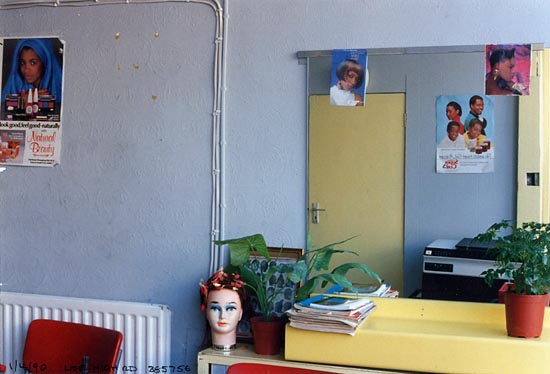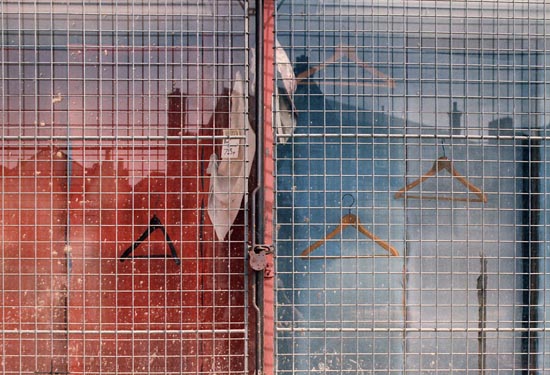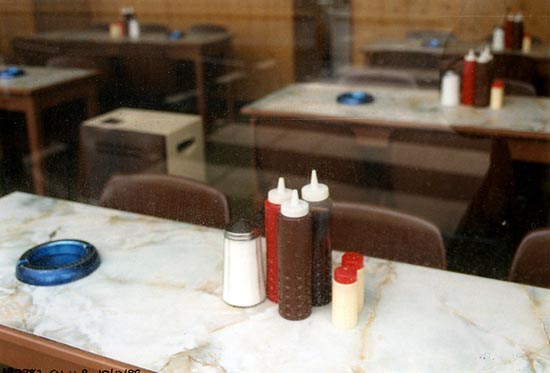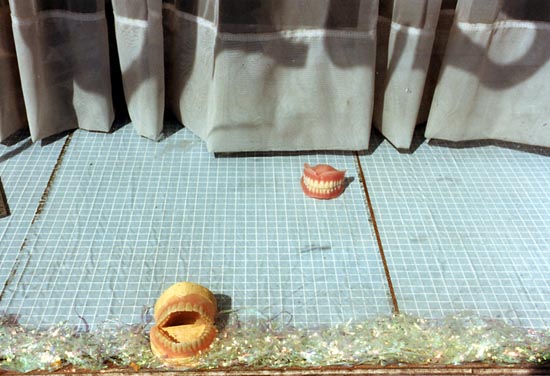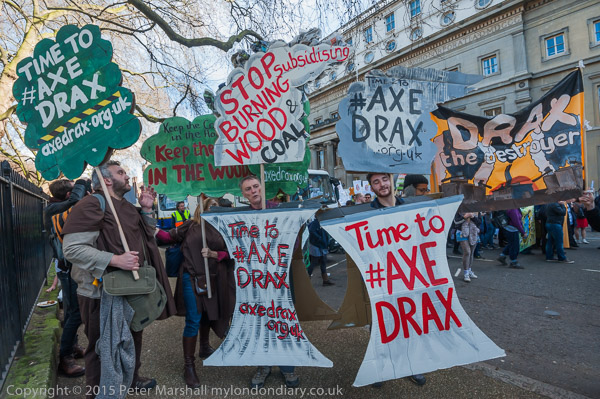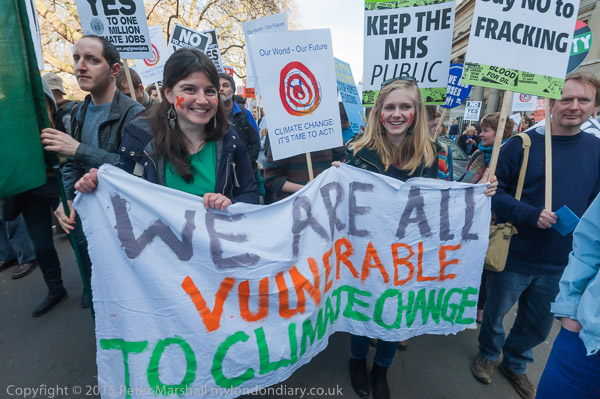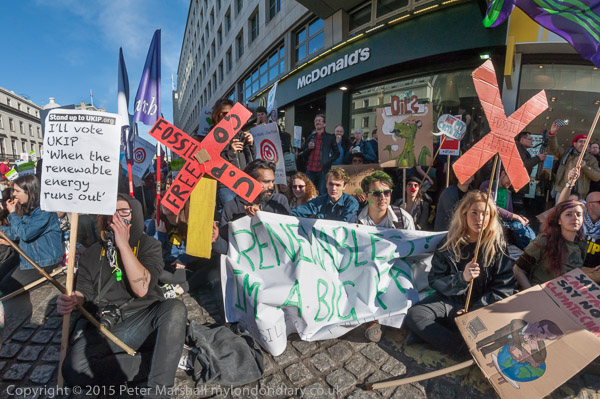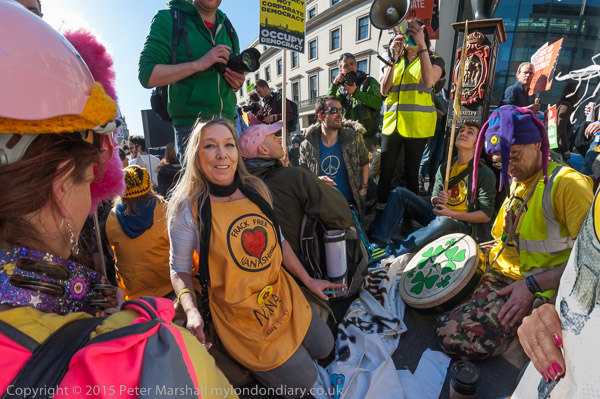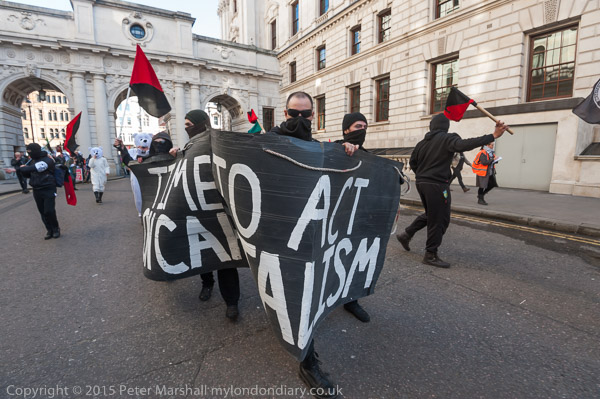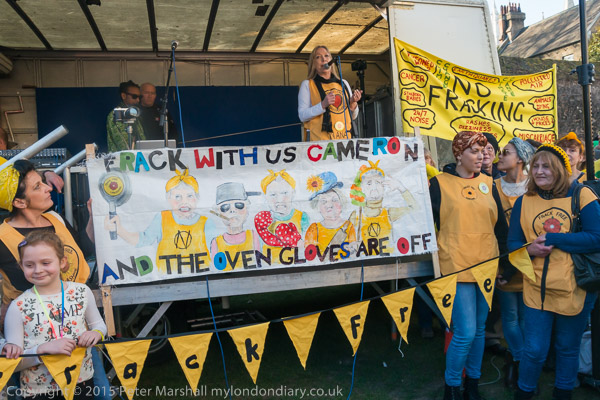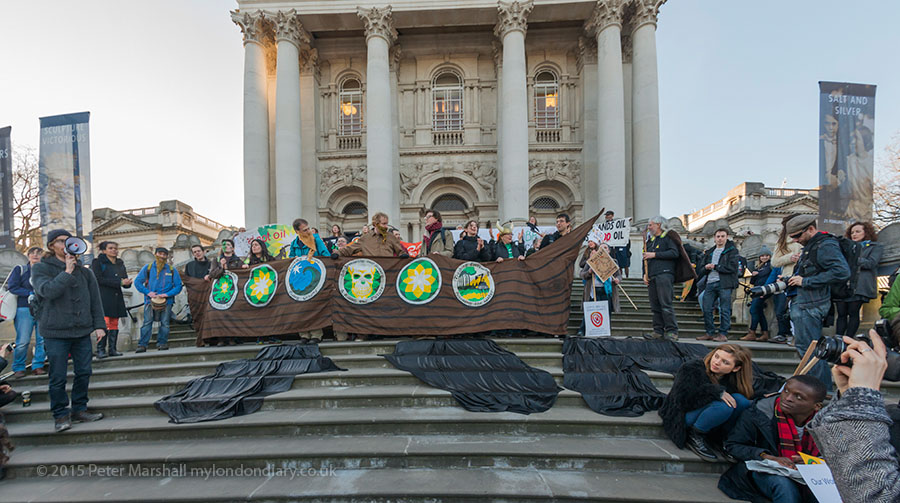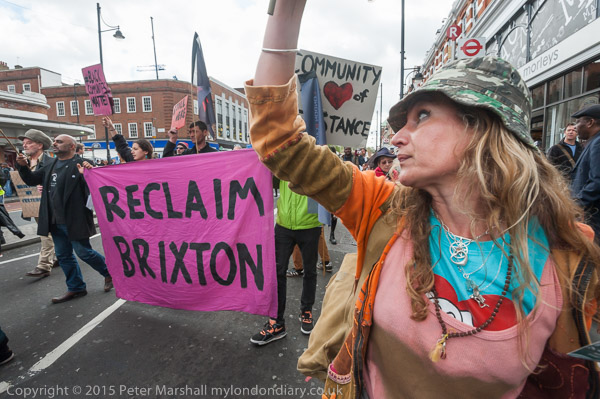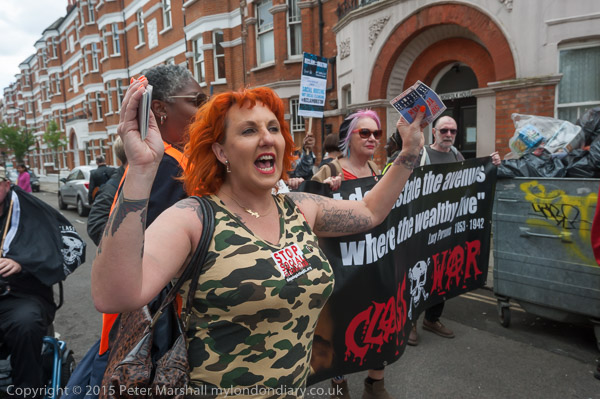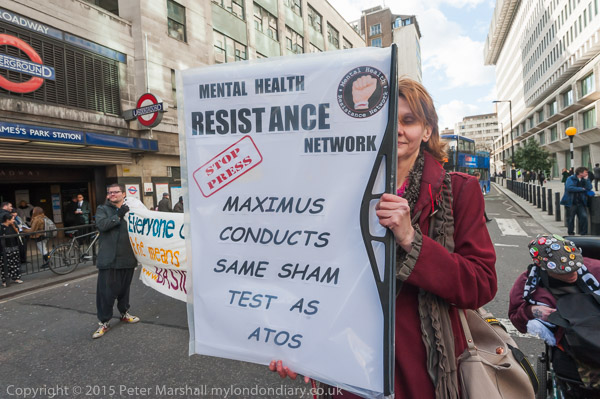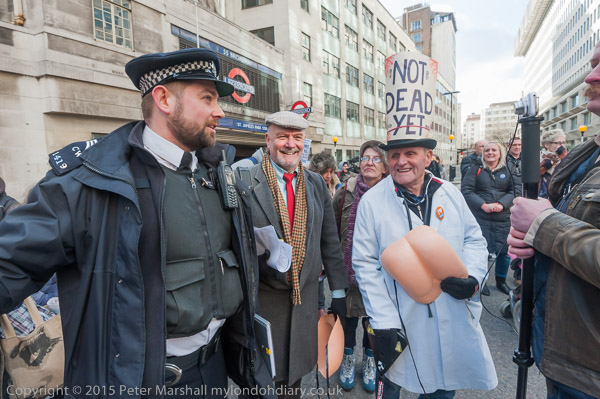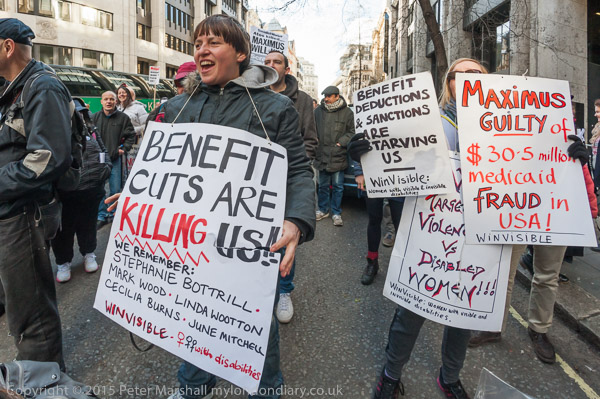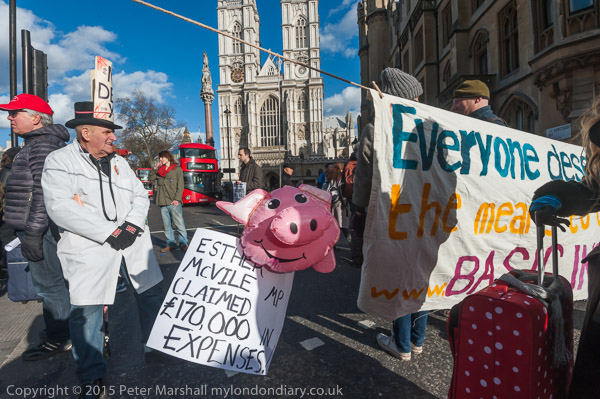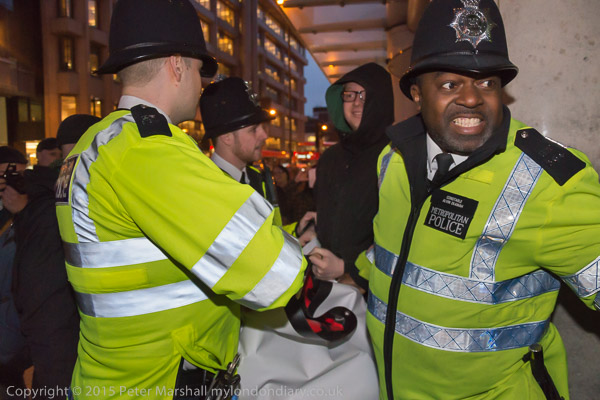
The picture above shows three police officers grabbing a banner from a protester at the protest outside the ‘rich door‘ of the flats at One Commercial St, the door at the front of the building on the main street that the social tenants in the block are banned from using. As I’ve mentioned in previous posts here and in My London Diary, residents in the social housing and their visitors have to use a less convenient entrance in an often dirty alley at the side of the building – the poor door.
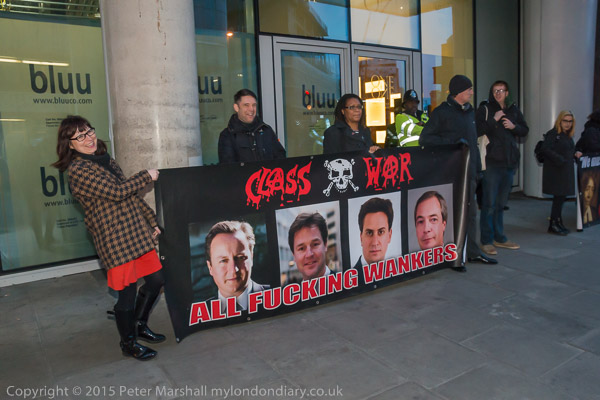
The banner the police are taking is one that has appeared at some of these and other recent protests being carried by Class War, and has been seen by thousands. Many of those who have seen it have been noticeably amused, some clearly expressing agreement, and while some may have felt it unfair or inappropriate, I’m not aware that anyone has been seriously offended by it.
It’s a banner that does cause me some problems, and I usually refer to it euphemistically as the ‘Political Leaders’ banner. Similar posters with individual images of the party leaders were published by Class War at the time of the last election, and one over-zealous police officer organised a raid on the home of a well-known photographer who had displayed them in his front window.
There are two words that I seldom use in the caption across the bottom of the banner, the ‘f’ word and the ‘w’ word. I can remember the shock expressed in the press when the first of these was first used on live TV in the UK, but now it, like the ‘w’ word is commonplace, though still to some extent controlled.
We don’t often say it in polite middle-class company, but for the great majority of the population it is a part of normal speech; when I first went to work in an engineering factory as a student it accounted for around 50% of the speech of some of the workers on the shop floor, and there would be relatively few sentences without it. Travelling around London on public transport or foot I overhear it in frequent use. We may dislike it or disapprove of it, but it has little power to shock or offend.
After police seized the posters in 2010, the photographer concerned had a surreal exchange with the police, which resulted in him replacing the posters in his window but with the word ‘onanist’ replacing ‘wanker’. Later, a court decided the police action had infringed his right to freedom of speech and expression, and the photographer was awarded compensation for the police actions.
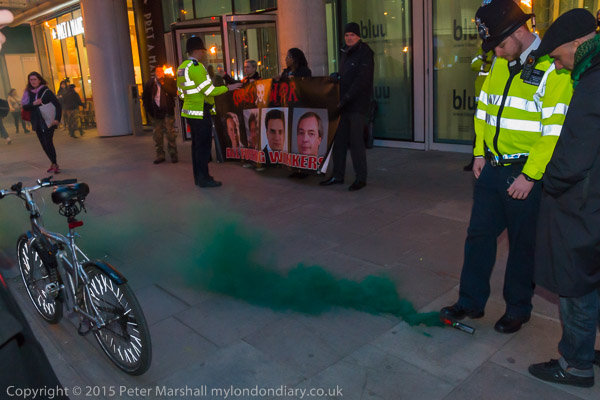
After the protesters had lit flaming torches and a green smoke flare, a police officer decided it was time the police took some action. He went up to the people holding the banner and told them it was offensive and they must put it away.
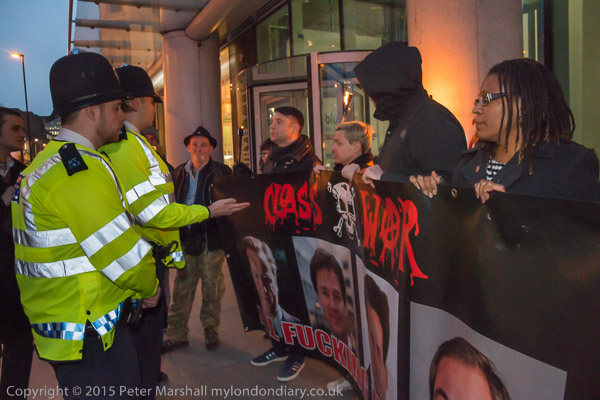
They asked him if anyone had been offended by it, and fairly clearly no one other than that officer had been, but he and another officer then the officers then warned individually each person holding it that they were committing an offence and might be arrested, and then seized the banner.
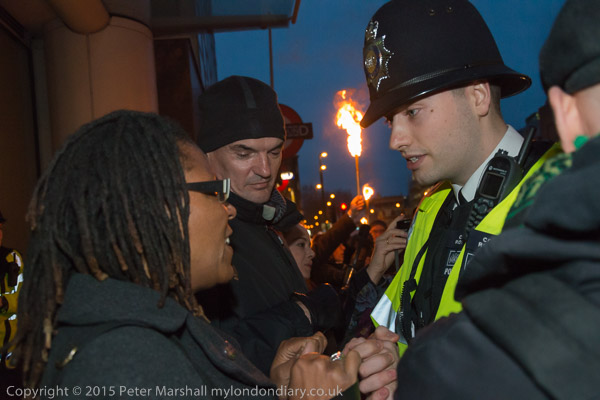
One of the people holding the banner continued to hold on to it as the police tried to pull it away, saying they had no right to take it. After they had forced it out of his hands, he was led away, and handcuffed.
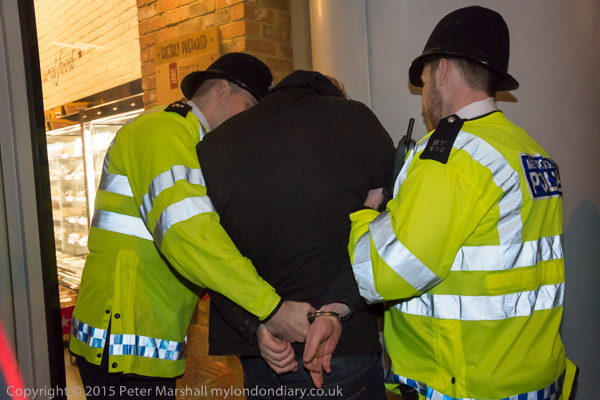
Eventually police reinforcements arrived, including a more senior officer, who appeared not to be too pleased at what had happened, but the arrested man was taken away to the police station and the protest continued more or less as usual.
The last I heard of the case was that the police were trying to get the man to accept a fixed penalty so that the case would not go to court, where a conviction might be difficult.
The photographs – as often in other events – make things appear very much more ordered than they were. One thing that is largely missing from my pictures are the half a dozen photographers also trying to photograph them, and the crowd of perhaps twenty protesters also trying to see what was happening and at times to intervene while the banner was being grabbed and during the arrest.
A wide-angle lens lets me get in close, but its also vital to try to anticipate how the scene will develop and where it would be possible to take pictures. It’s also important that while recording the actions of the police photographers don’t impede them. Most of these images were made with the D800E and the 18-105mm DX lens at 18mm – 27mm equivalent. I was working at ISO3200 but on some images there was a couple of stops of exposure compensation, so making it more like ISO12,800. The reflective strips on police clothing give problems with flash, and the exposure compensation stops these burning out, though quite a lot of burning in of them and the fluorescent green jackets was needed.
There is also a high degree of editing. Much of the time it was quite crowded and people were pushing and bumping into me and even though I was using flash some are not sharp. The light was also fairly poor for autofocus. And many pictures were rejected because of people getting in my way as I was taking pictures. Of course I will have got in their way too.
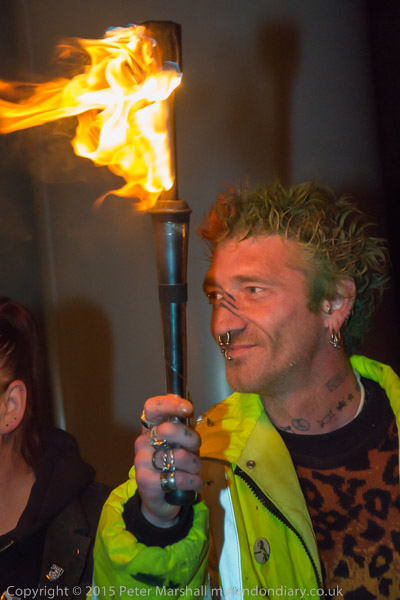
The flaming torches also present something of a challenge so far as exposure is concerned. Getting detail in those flames as well as the rest of the scene isn’t too easy even given the great dynamic range of the D800E, and there are a few pictures where I didn’t quite do it as well as I would have hoped. But others seem to have held the detail in the flames well – with the help of a little flash and quite a lot of Lightroom.
You can see more at Police seize Class War banner.
